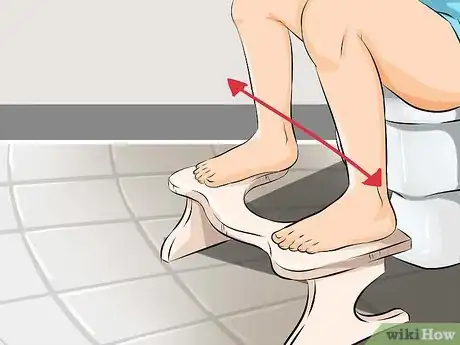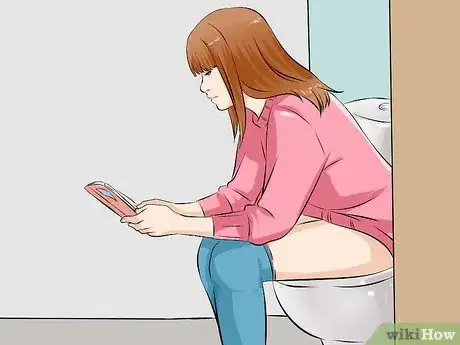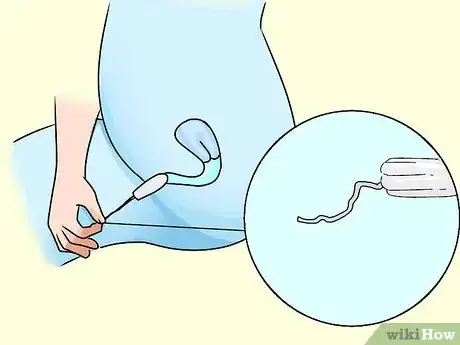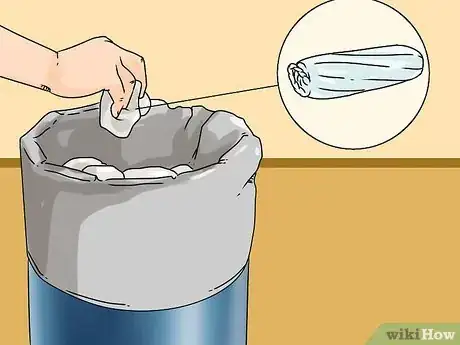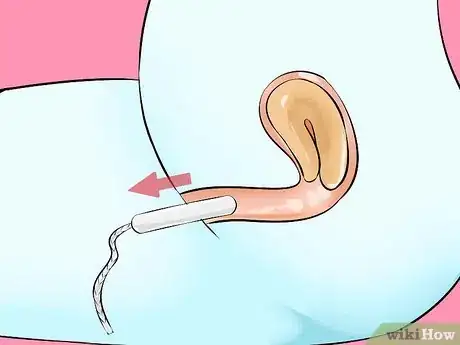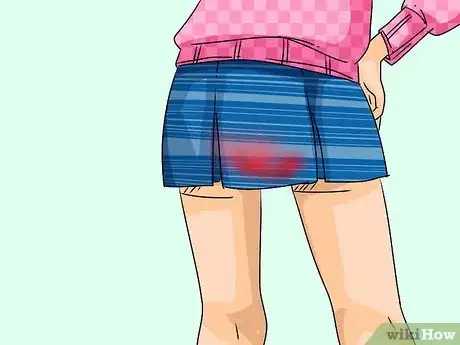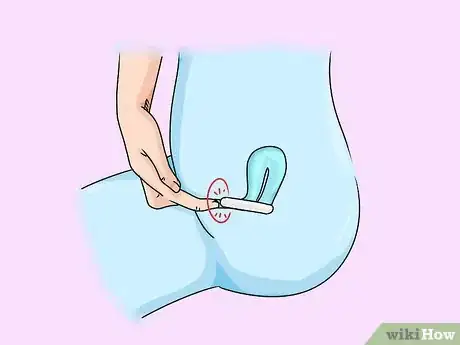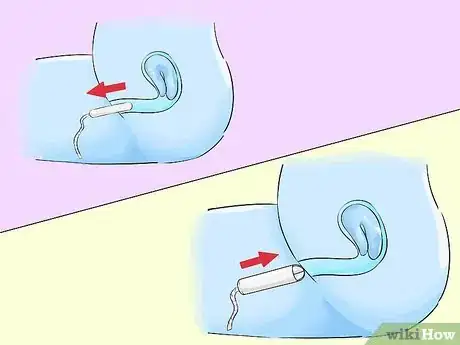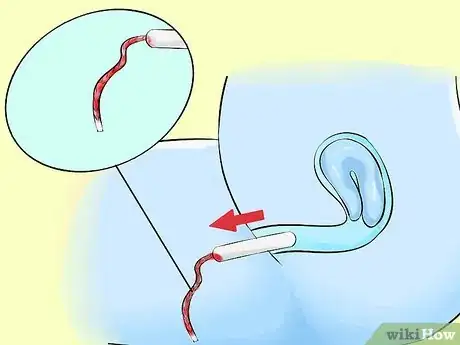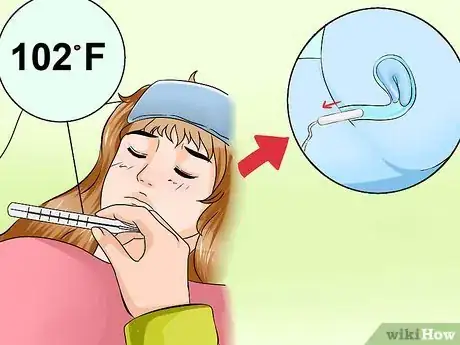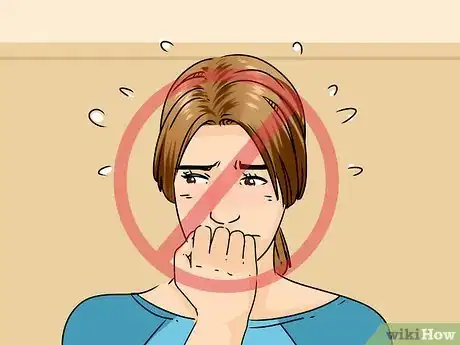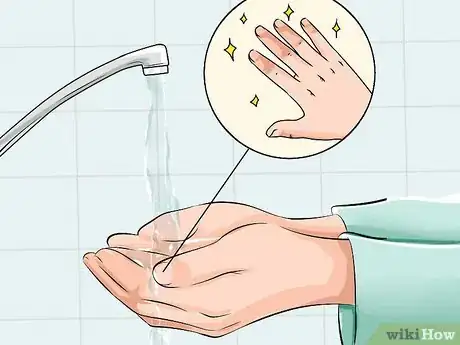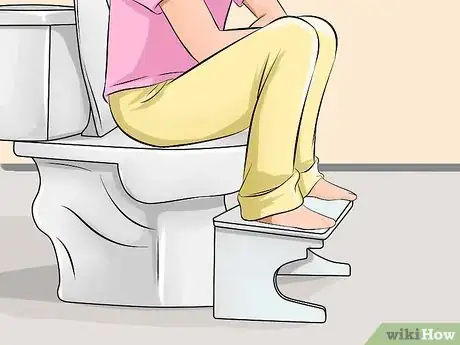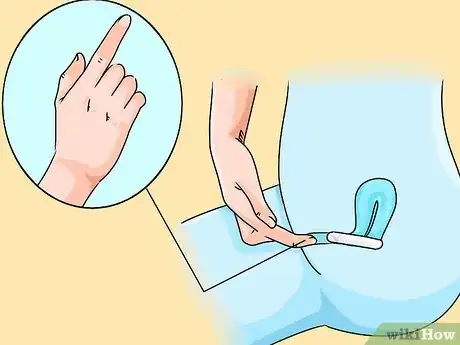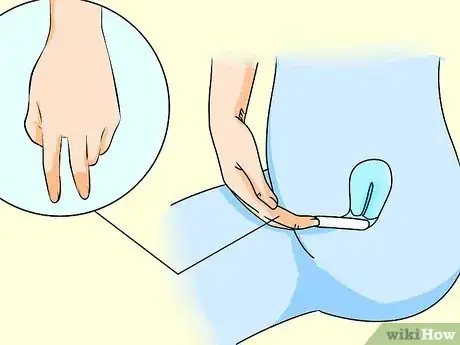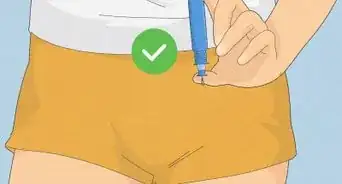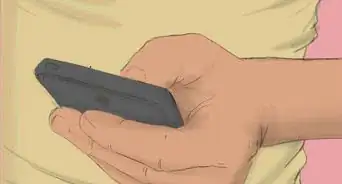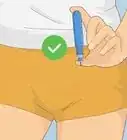This article was medically reviewed by Luba Lee, FNP-BC, MS. Luba Lee, FNP-BC is a Board-Certified Family Nurse Practitioner (FNP) and educator in Tennessee with over a decade of clinical experience. Luba has certifications in Pediatric Advanced Life Support (PALS), Emergency Medicine, Advanced Cardiac Life Support (ACLS), Team Building, and Critical Care Nursing. She received her Master of Science in Nursing (MSN) from the University of Tennessee in 2006.
There are 10 references cited in this article, which can be found at the bottom of the page.
wikiHow marks an article as reader-approved once it receives enough positive feedback. In this case, 84% of readers who voted found the article helpful, earning it our reader-approved status.
This article has been viewed 422,906 times.
Your period isn't exactly your best friend, we know, but that's what tampons are for. Tampons allow you to swim, play sports, and go about your normal daily life. They can seem a bit tricky if you're inexperienced, and knowing when to remove one isn't always clear. But we're to to help! We'll show you how to remove a tampon (including one with no string), and fill you in on when you should swap it out so you can go about your day worry-free.
Things You Should Know
- Sit on the toilet with your knees spread, and take a few deep breaths to relax your muscles.
- Pull the string at the end of the tampon to gently remove it, then wrap it in a paper towel and drop it into the garbage.
- If the string breaks, don't panic. Just insert two fingers into your vagina and grab the tampon between them. Use your fingers to pull it out.
- Change your tampon every 3-5 hours, or when you experience any wetness. Also change it if there's blood on the string.
Steps
Removing Your Tampon
-
1Sit on the toilet with your legs spread.[1] Sitting over the toilet reduces any possible mess.
-
2Relax. Removing a tampon should not be painful. If you are nervous, take a deep breath and distract yourself by reading a magazine. Do not clench your vaginal muscles.
- If you can't relax, try to pee a little. This may relax the muscles enough to allow you to remove the tampon easily.[2]
-
3Pull the string at the end of the tampon. The tampon should slide out easily, with little or no resistance.
- If the tampon does not come out easily or it is painful to remove, it may not need to be changed. Unless it's been 8 hours (in which case you should try the peeing trick to ease its removal), leave the tampon in another hour or two and then check it.[3]
- If you remove the tampon after 4-8 hours and there is very little blood, you may want to switch to a lower absorbency tampon or use panty liners instead.[4]
-
4Once removed, wrap the tampon in toilet paper and place in the garbage. Some companies claim their tampons are safe to flush, but it's generally not a good idea.[5] Tampons will eventually break down, but not quickly enough that they won't expand and clog your pipes, destroy your septic tank, and cause a lot of (expensive!) plumbing problems.
Knowing When to Change Your Tampon
-
1Remove your tampon every 3-5 hours to avoid saturation. Although tampons can be worn safely for up to 8 hours, they generally need to be changed more often than this. Depending on how heavy your cycle is, you need to change out your tampon every 3-5 hours to avoid leaks.[6]
- Leaving a tampon in longer than 8 hours puts you at a higher risk for infection for Toxic Shock Syndrome (TSS), a rare but potentially deadly infection.[7]
- If you try to change your tampon and it still has a lot of absorbency or only has a little blood on it, try switching to a lower absorbency tampon. Always wear the tampon with the lowest possible absorbency for your flow.[8]
-
2Change your tampon if you feel any wetness. This means your tampon is no longer absorbing the blood and it is leaking.[9]
- Wear a thin panty-liner if you are worried about your tampon leaking.
-
3Check your tampon if it feels uncomfortable. If your tampon is inserted correctly, you should not be able to tell it is there. If you can feel something, it means the tampon is too low. With clean hands, use one finger to push the tampon further up into your vagina.[10]
- If the tampon won't move or it is painful to push, your vagina is too dry and you should remove the tampon and start over. You may want to try a tampon with a lower absorbency. [11]
-
4Change your tampon if you tug on the string and it slides out easily. You should give the string a little experimental pull every time you go to the bathroom. If the tampon comes right out, then it's time to change.[12]
-
5Change your tampon if there is blood on the string. Even if the tampon itself isn't fully saturated or doesn't slide out easily, if the string is bloody it means the tampon was about to leak.[13]
-
6Check for symptoms of TSS (Toxic Shock Syndrome). Remove your tampon and seek medical help if you have: a sudden, high fever (usually 102°F or more); a red rash that looks like a sunburn anywhere on your body; feel dizzy or faint when standing up; or if you experience vomiting or diarrhea. These are symptoms of TSS. While it is rare, TSS can be deadly and these symptoms should be taken seriously.[14]
Removing a Tampon with No String
-
1Don't panic. It is impossible for a tampon to get "lost" in your body if the string breaks or you can't find it.[15]
-
2Wash your hands with soap and warm water. Wet your hands, then apply soap. Scrub your hands with the soap, then rinse your hands clean. Dry your hands with a clean towel.
- Your hands can harbor germs that may transfer into your vagina.
- Make sure your nails aren't jagged or sharp, as you might scratch yourself.
-
3Get into the position you would normally be in when inserting a tampon. For example, you can sit over the toilet, squat, or stand with one leg up on the toilet seat. Choose the position that's most comfortable for you. Take a deep breath and try to relax.[16]
-
4Insert your pointer finger into your vagina and feel for the tampon. Make circular and back and forth movements until you feel the tampon. It may be turned to the side or pushed up to the top of the vaginal canal, near the cervix and behind your bladder.[17]
-
5Insert two fingers, trapping the tampon between them, and pull it out.[18]
- If you cannot feel the tampon or have trouble removing it, trying sitting on the toilet and pushing as though you are trying to push out a baby or go poop.
Expert Q&A
Did you know you can get expert answers for this article?
Unlock expert answers by supporting wikiHow
-
QuestionWhat if I can't remove the tampon?
 Luba Lee, FNP-BC, MSLuba Lee, FNP-BC is a Board-Certified Family Nurse Practitioner (FNP) and educator in Tennessee with over a decade of clinical experience. Luba has certifications in Pediatric Advanced Life Support (PALS), Emergency Medicine, Advanced Cardiac Life Support (ACLS), Team Building, and Critical Care Nursing. She received her Master of Science in Nursing (MSN) from the University of Tennessee in 2006.
Luba Lee, FNP-BC, MSLuba Lee, FNP-BC is a Board-Certified Family Nurse Practitioner (FNP) and educator in Tennessee with over a decade of clinical experience. Luba has certifications in Pediatric Advanced Life Support (PALS), Emergency Medicine, Advanced Cardiac Life Support (ACLS), Team Building, and Critical Care Nursing. She received her Master of Science in Nursing (MSN) from the University of Tennessee in 2006.
Board-Certified Family Nurse Practitioner
Warnings
- TSS- toxic shock syndrome. This is extremely rare but is very serious. It is an illness which occurs when a tampon is being used for a long period of time. Make sure you change it every 8 hours!⧼thumbs_response⧽
- Make sure to use the right tampon absorbency according to your flow. If your flow is light and you are using a Super-Duty tampon it will not become full and can result in vaginal tearing which leads to to toxic shock syndrome.⧼thumbs_response⧽
References
- ↑ http://www.playtexplayon.com/tampon-faq/how-to-use
- ↑ https://www.ubykotex.com/get-the-facts/question?id=51544
- ↑ http://www.theperiodblog.com/how-to-guides/how-to-tell-when-to-change-your-tampon/
- ↑ http://www.theperiodblog.com/how-to-guides/how-to-tell-when-to-change-your-tampon/
- ↑ https://www.itsdone.com/what-you-can-and-cannot-flush-down-the-toilet/
- ↑ https://www.verywellhealth.com/menstrual-hygiene-how-often-to-change-tampons-or-pads-3522511
- ↑ http://tampax.com/en-us/tips-and-advice/period-advice/how-long-can-i-leave-my-tampon-in
- ↑ http://tampax.com/en-us/tips-and-advice/period-advice/how-long-can-i-leave-my-tampon-in
- ↑ http://www.theperiodblog.com/how-to-guides/how-to-tell-when-to-change-your-tampon/
- ↑ http://www.theperiodblog.com/how-to-guides/can-you-still-feel-your-tampon/
- ↑ http://www.theperiodblog.com/how-to-guides/can-you-still-feel-your-tampon/
- ↑ http://www.theperiodblog.com/how-to-guides/how-to-tell-when-to-change-your-tampon/
- ↑ http://www.theperiodblog.com/how-to-guides/how-to-tell-when-to-change-your-tampon/
- ↑ http://tampax.com/en-us/tips-and-advice/period-health/toxic-shock-syndrome
- ↑ http://www.healthdirect.gov.au/retained-object-or-tampon
- ↑ http://youngwomenshealth.org/2011/03/16/forgot_to_take_tampon_out/
- ↑ http://www.healthdirect.gov.au/retained-object-or-tampon
- ↑ http://www.healthdirect.gov.au/retained-object-or-tampon
About This Article
To remove a tampon, sit on the toilet with your legs spread and try to relax as you pull the string at the end of the tampon. Once out, wrap the tampon in toilet paper and throw it in the garbage. If the string breaks or is lost, insert your pointer finger and feel around until you locate the tampon. Then, trap it between two fingers and guide it out. Plan to change your tampon every 3 to 5 hours to avoid saturation. Alternatively, if your tampon still has a lot of absorbency after several hours, then switch to a lower absorbency tampon. To learn how to check your tampon if it feels uncomfortable, keep reading!
